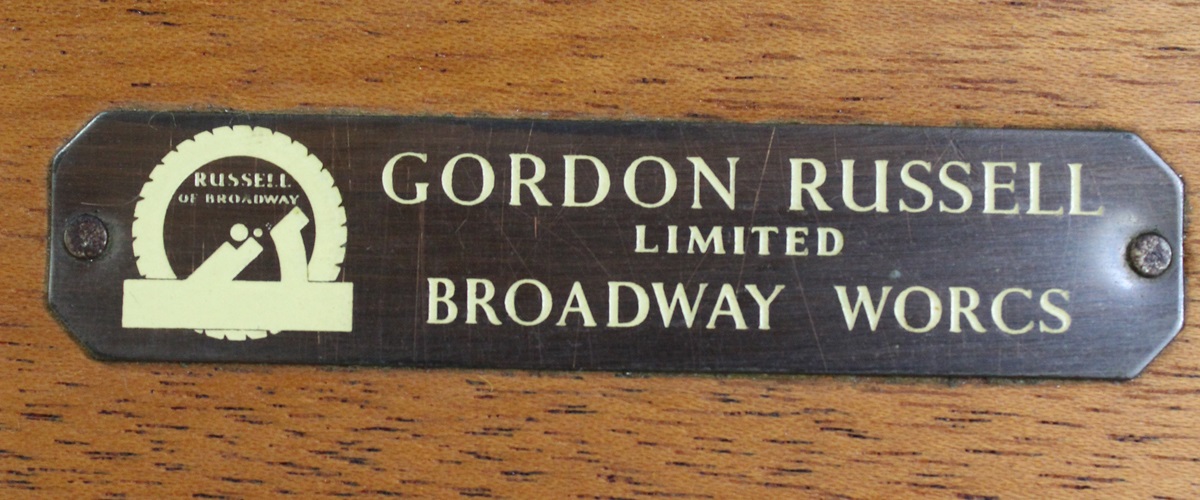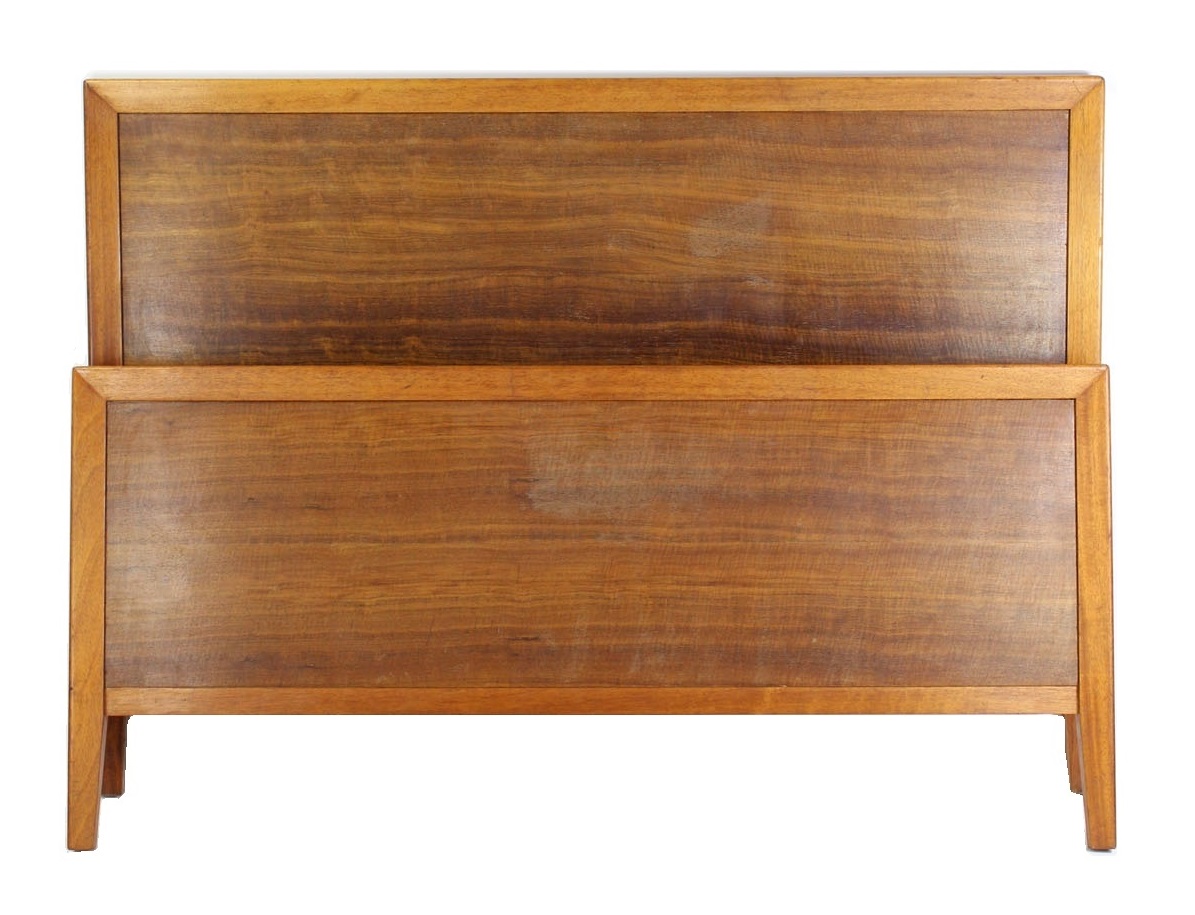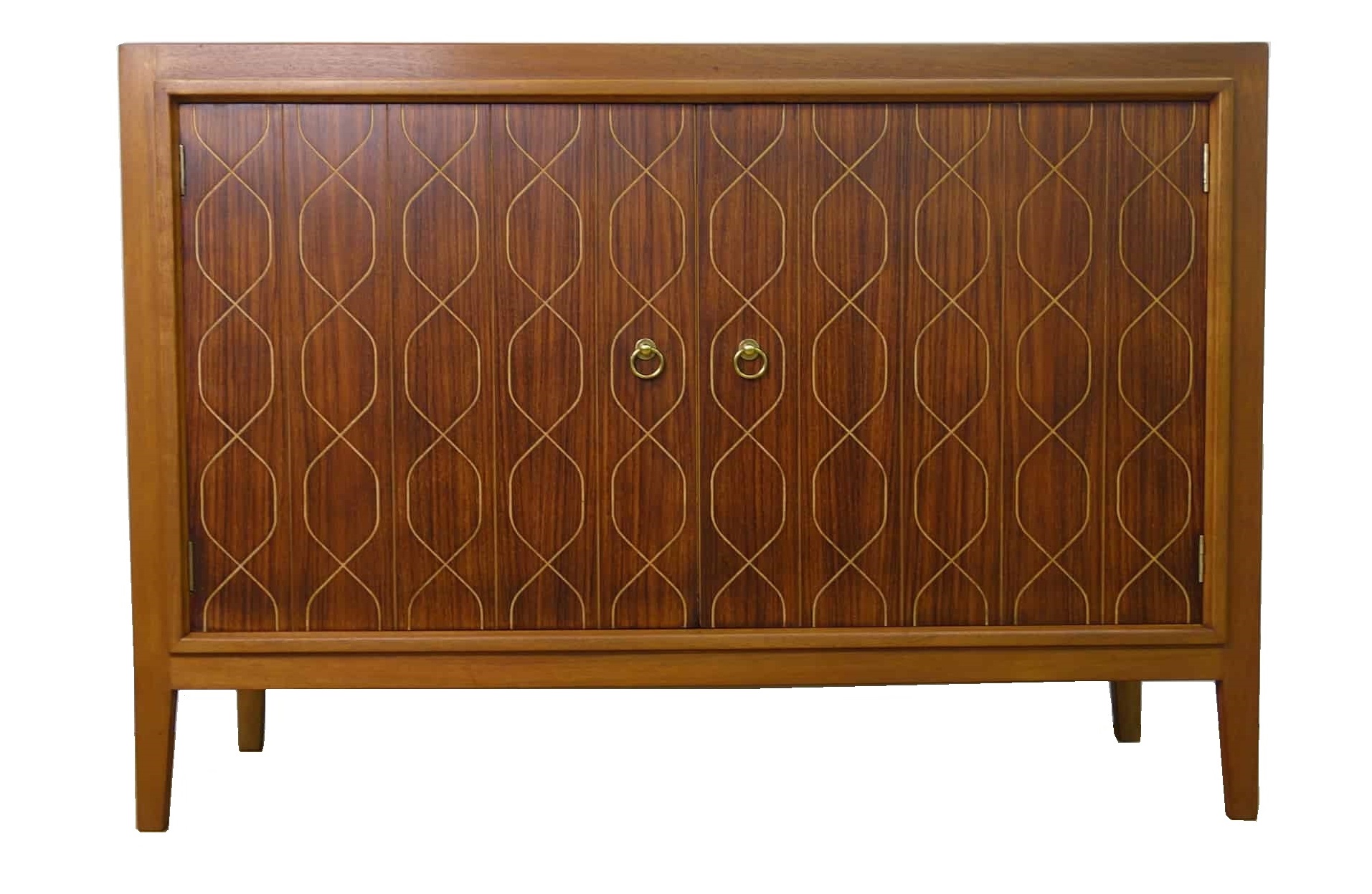
Born in 1892 Sir Gordon Russell was an English designer and furniture maker who became an important figure in 20th century design.
From his Broadway workshops his company produced a range of high quality furniture including bedroom suites and beds. He is best known for his mid-century pieces of furniture such as dining tables and chairs produced in large numbers during the 1950s and 1960s and the now iconic “Double Helix” sideboard designed by David Booth and Judith Ledeboer and shown at the Festival of Britain in 1951. Gordon Russell beds were often produced as part of bedroom suites with matching dressing tables, wardrobes and bedside cabinets. Earlier pieces being made in oak and later pieces often made from high quality timbers such as Rosewood, Teak, Mahogany and Indian Laurel.
Gordon Russell was heavily influenced by the Arts and Crafts movement from an early age. His family moved to Broadway in the Cotswolds as a child in 1904, where his father worked as an hotelier. It was here that he was exposed to the work of the Guild of Handicraft, a collective of wood carvers, furniture makers, metalworkers and designers formed in 1902 by C.R. Ashbee. It would be in the spirit of the Arts and Crafts philosophies and ideals in producing the best quality in design and function that would permeate throughout Russells career.
After serving in the army during World War 1 Russell became an antiques restorer, cabinet maker and designer and would find success early on. In the 1920s he designed the “Stow” range of furniture. This high quality bedroom furniture drew heavily from the Arts and Crafts traditions of his Cotswolds upbringing, using high quality timbers such as oak, bog oak and cedar wood to produce good quality hand crafted furniture which has stood the test of time. These early pieces are now much sought after. He won a Gold Medal in the Paris Exhibition of 1925 for a cabinet he designed and made using Boxwood, Ebony and Laburnum. This piece is now estimated to be worth around £50,000.
During World War II Russell was instrumental in developing Utility Furniture. Because to a lack of timber and constant destruction due to enemy bombing there was a severe shortage in furniture during this period and The Utility Furniture Advisory Committee was set up in 1942 in order to make sure scarce resources were used as efficiently as possible. New furniture was rationed and manufactured to strict guidelines. Gordon Russell was appointed Chairman of the government’s Utility Furniture Design Panel in 1943. Utility furniture was produced by over 700 manufacturers to approved designs. Utility furniture of this period (1942-1952) can be identified by the CC41 stamp to the back, which stood for “Controlled Commodity 1941” (also known as “The Two Cheeses”).
In his lifetime he oversaw the progression from hand crafted furniture to machine made furniture, but understood the importance of maintaining good craftsmanship in mass production. Although he admired the principals of the Arts and Crafts Movement he wasn’t constrained by their idealisms of fixating on the past and was very much a designer who embraced the future. His designs were often cutting edge, embracing the modern age, while maintaining his cardinal principal of making furniture to the highest possible standards. In 1955 Gordon Russell was awarded a knighthood for services to design.
A mid-century Gordon Russell bed in Teak and Indian Laurel.

The now iconic Gordon Russell “Double Helix” sideboard.
